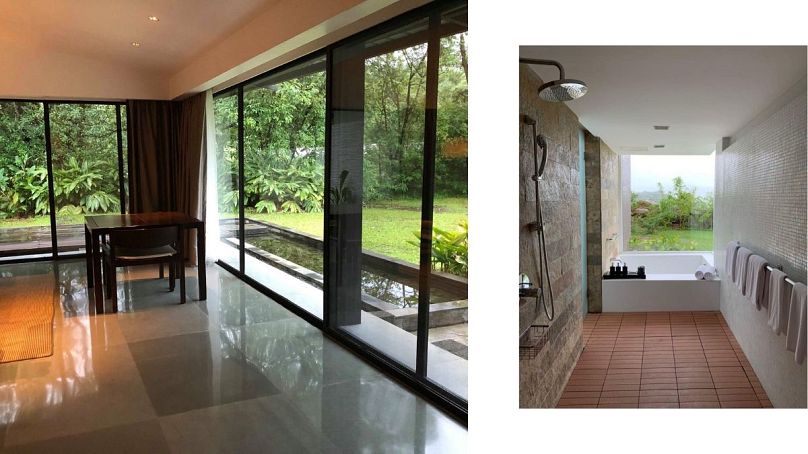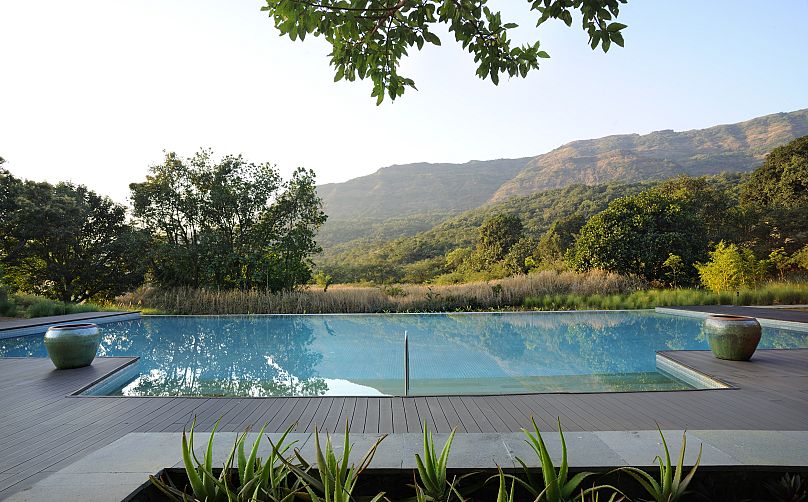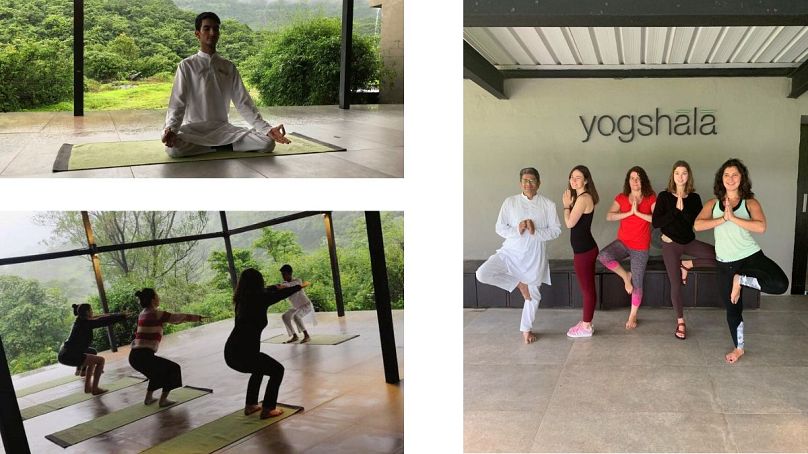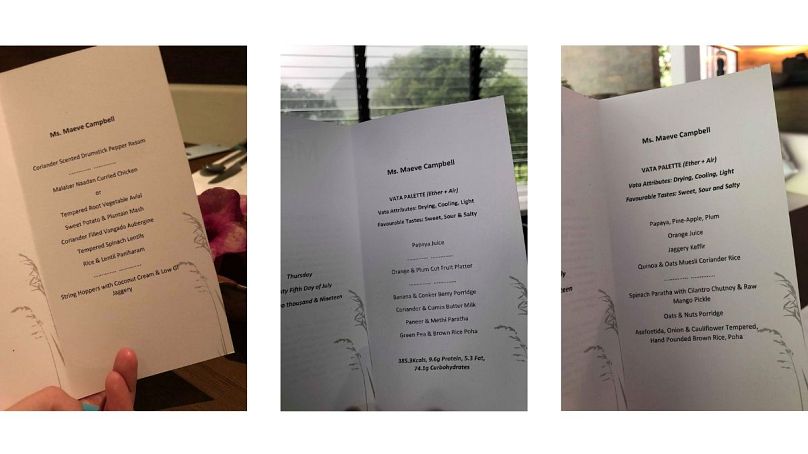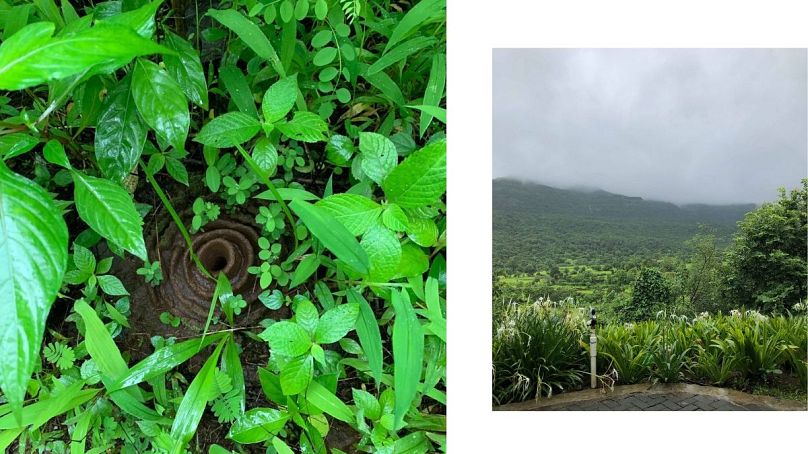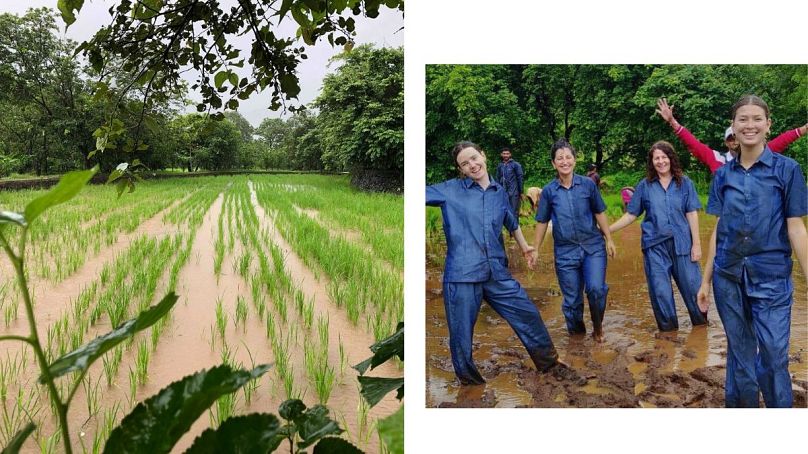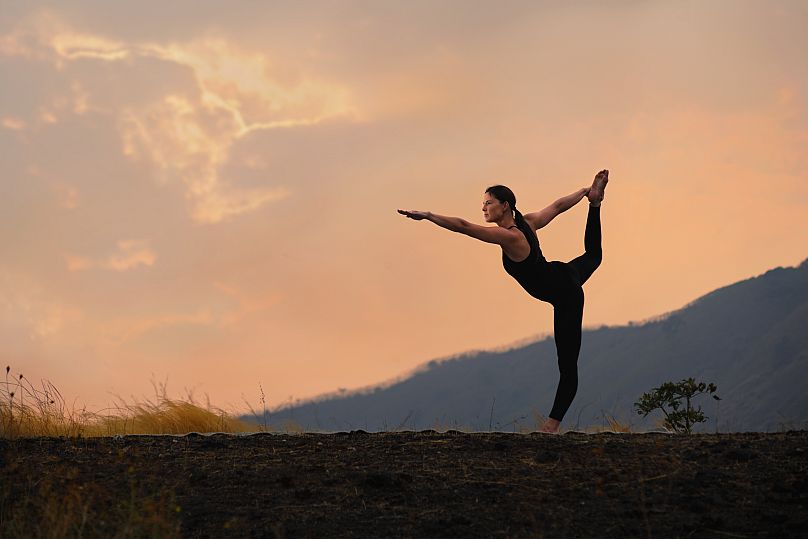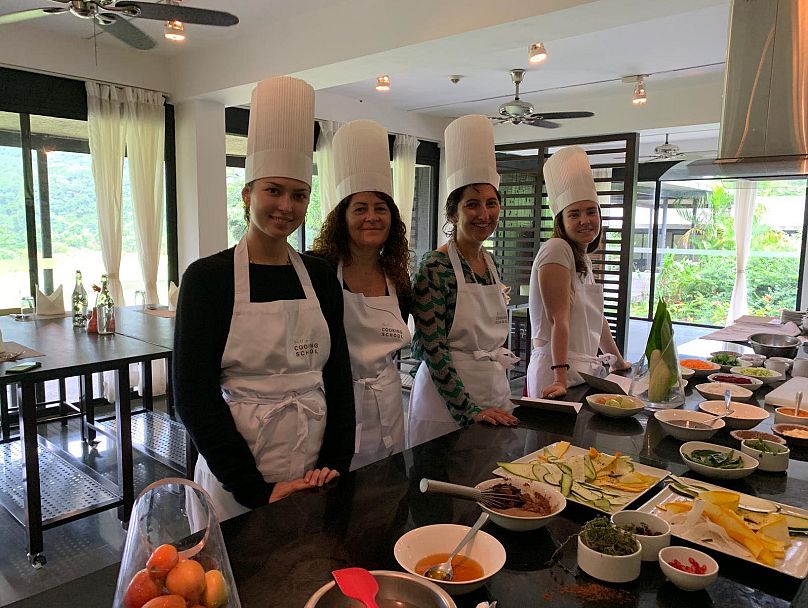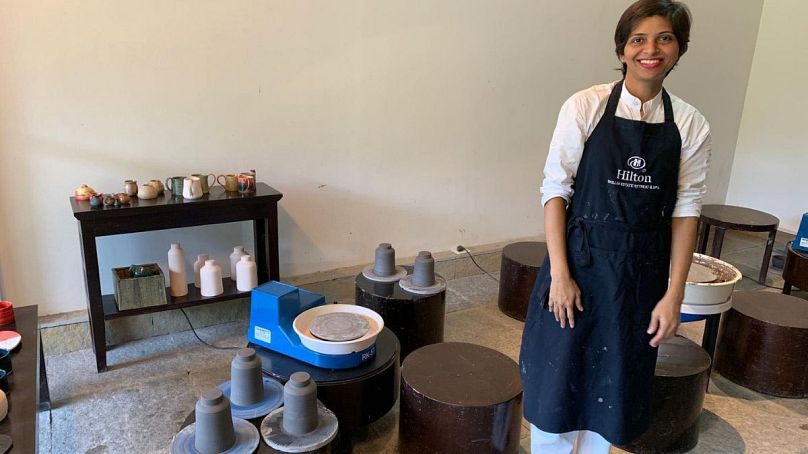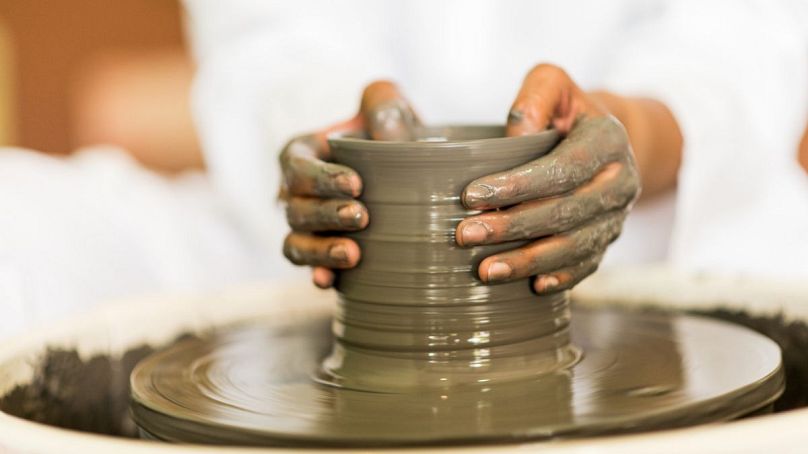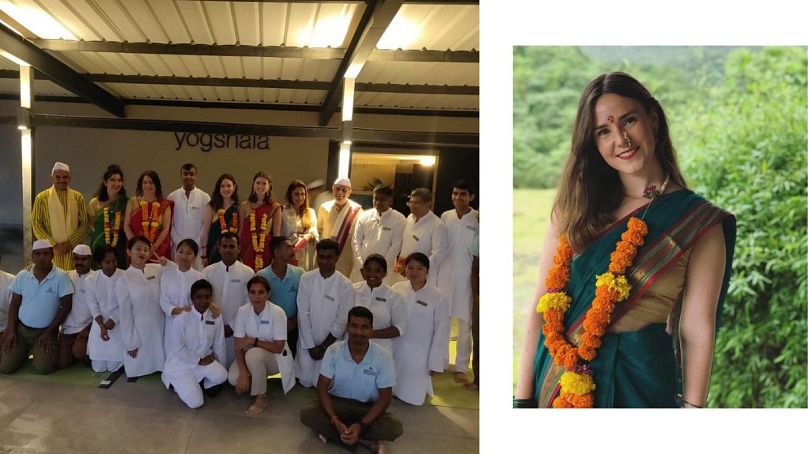Five days of healing processes in the midst of the monsoons at super exclusive eco-wellness resort Shillim.
Arriving in Mumbai after a nine-hour journey in the sky, I was instantly met with a wall of heat in this big and bustling city. As we crossed the Indian state of Maharashtra, climbing higher and higher into the wild and untamed Ghats of the Sahyadri range, the air was humid as the skies poured. I had been told that visiting India in the midst of the monsoons was an experience in itself. The rain was thick and torrential and the landscape green and succulent. By the time we reached the Shillim eco resort, located at the highest point of the mountain range, it became clear the landscape itself was not only breathtaking, it was to be at the helm of my experience at the retreat.
We were greeted warmly upon arrival with a welcome ritual in the healing space, as the retreat practitioners introduced us to the ‘Dharana’ way of life. They explained that Dharana is the sixth stage of Patanjali's Ashtanga Yoga or Raja Yoga, which entails ‘forgetting oneself in the object of his or her meditation’, to achieve long-term wellbeing, calm and contentedness.
Stumbling sleepily back to my private villa, I was met with my very own secluded pool, alongside an airy space, surrounded by walls of glass and an opulent lounge and bedroom – topped off with a stone bathtub big enough to fit three of me. On that first night, I slept like a baby, cocooned inside my canopy with the rain overhead and the smell of forest in the air, unaware as to what was in store for me.
Early morning yoga sessions
My first proper day of the Dharana wellness programme started with a 6am Pranayama yoga session which centred around breathing techniques and concentration. I found my mind wandering, as is often the case in meditative practice, but yoga master Ajinkya soon brought me back to the moment with his reassuring reminders to focus on the breath. After a breakfast of quinoa and oat muesli, with papaya and plum juice, and sweet jaggery kefir, it was time for my initial consultations with the retreat specialists.
Each consultation marked the start of my Dharana journey, as I proceeded to meet with a dietitian and diagnostician, an Ayurvedic doctor - Dr Arun Pillai - and a physio. I was asked a series of questions relating to both the mind and body, from my sleep cycle, to the units of alcohol I regularly consumed and my daily food intake, in order to establish my constitutional type.
After concluding that my body type was predominantly Vata (the air/wind element), as opposed to Pitta (fire) or Kapha (water), a personalised wellness programme was then devised. This was the most extraordinary and unique element of the retreat: the whole week is a tailor-made programme for each guest’s specific needs. From detailed menus at every meal, to healing therapies and activities that reflected the imbalances in my mind and body, it was all catered to me.
Trekking in the mountains
The latter part of the day kicked off with an activity designed to put me back in touch with the healing qualities deriving from nature, as we trekked up the mountain on a stream walk. Accompanied by the local naturalist and expert in sustainability, Raviraj, we hiked upstream in the hot rain until we reached some waterfalls. Soaked from head-to-toe from the walk, I slid down the waterfall with the others I had met at the retreat and felt blissfully at one with the landscape around me.
Before dinner was a Trataka meditation, where we stared at a single candle flame in the darkness to enhance our focus and energise our minds, followed by a meal of pumpkin curry, ginger cashew sole fish and coriander rice. Of course, this was a meal specially designed for me, based on the ingredients that my body type reacted to positively and flavours that would improve my digestion.
Related | Newly open eco-resorts offering a green escape
Tree planting
Day 2 was all about conservation. Back when the hotel’s founders, the de Souza brothers, acquired the 2,500 acres of mountainous forest, it was their aim to conserve and restore the land. They worked alongside engineers, horticulturalists, and ecologists to revegetate slopes, recharge groundwater and cultivate new grasslands.
The team regularly plant millions of new trees in the nursery, added in 2003, and were visibly passionate about conserving their surroundings. In charge of conserving the area’s biodiversity, Raviraj was a true specialist in his field. We bore witness to the miracles of nature that existed all over the forest, from intricate ant nests to natural springs. But most importantly, we learnt the importance of preserving a land home to hundreds of species, which directly provides food, water and a stable climate to millions of surrounding inhabitants.
Related | Are eco farm retreats replacing the club scene in Ibiza?
A local paddy plantation
Next on our itinerary was a trip to a local paddy plantation in a nearby village that promoted eco-tourism. Here we got the chance to explore Farm to Table Maharashtrian cuisine and take part in a sustainability workshop designed to educate locals on how to reduce waste.
We visited a fully sustainable house, made from mud and manure and recycled slate, before heading out into the paddy fields ourselves to harvest some rice. Knee-deep in mud, the experience was just about as authentic as it gets, teaching us exactly how rice is grown and the hard graft that is put into the plantations. We took part in the second stage of harvesting, direct seeding, which involves swiftly replanting seedlings into the earth in a wet field. We were taught that vigorous crop growth was necessary to prevent seed-borne diseases and weed seeds from developing. The atmosphere was messy, communal and a lot of fun, which made sense as paddy cultivation plays a major role in the socio-cultural life of rural India. Many Indian festivals centre around the harvest. It’s safe to say, I will never take a grain of rice for granted again!
My day came to an end at the spa – for some winding down after all the exertion. I received one of the Dharana signature therapies, a Vanaushadhi massage using raw oils squeezed from seeds, flowers and roots that were grown locally, before drifting off into a deep sleep.
Related | Conscious tourism in idyllic Saint Lucia
Relaxation and soothing the body from the outside in
The following day was to be all about relaxation and soothing the body from the outside in. We were granted a slight lie-in, meeting at 7 am for Vinyasa yoga on the wooden Yogshala deck open to the forest.
As we were guided through the balance and flow postures with yoga master Hitesh, I felt the most at home yet since I’d arrived at the retreat. The immersive experience of practising yoga deep in the forest, with birds tweeting and the sun rising over the mountains, was really something special.
After a fresh turmeric latte, a carrot and beetroot paratha and a glass of watermelon juice to cleanse the palate, I made my way down to my first treatment of the day. I was having, what is called, a Kativasthy and Patra potla swedhanam, a warming spinal massage using oils and paste to soothe muscular tissue and alleviate pain. Bliss.
Related | Eco-resort: Ayurveda by the beach
Raw cooking and pottery lessons
During a raw cooking lesson at lunchtime, we were shown how to make cucumber and green tomato soup alongside beetroot, carrot, cucumber, courgette and celery ‘noodles’. We then finished off by making a mouth-watering thyme scented cocoa and Shillim forest honey mousse with organic banana and walnut.
The afternoon that followed was quiet and peaceful, as I was given another massage, this time to activate and awaken my chakras, before an evening pottery lesson with instructor Tejaswani. I can certainly see why pottery is considered helpful for improving your sense of calm and concentration. The process is almost meditative as you watch the clay spin round and round and naturally focus your mind. A perfect activity to prepare me for a good night’s sleep.
A week of healing processes
My final day at Shillim was upon me, but I couldn’t imagine leaving such a restful, beautiful place. It began with a Pilates session at 6am, at the Vishrama room with the lovely Sagran, an astoundingly proficient teacher. After breakfast came a Tibetan bowl meditation with a flute player accompanying us in the corner of the room. His serene, Indian flute melodies brought me into an almost trance-like state of relaxation, a feeling I will never forget.
What followed was a series of conclusive consultations with the retreat practitioners, to find out if the detox programme had made any difference. They assessed all the same factors and asked me questions about how I was feeling, after a week of healing processes and an attempt to free me of stress.
The results were unanimously positive and I left with a full take-home pack of advice and recommendations to put into practice at home. From a full diet chart, including meal replacements to detox once a month, to physical exercises and a range of Ayurvedic medicine.
From now on I’ll be adding flax and chia seeds to my breakfast, including more pulses in my meals, detoxing once a month with a spinach and mint shot and meditating at least several times a week to balance out stress. While the Ayurveda philosophy may be ancient superstition rather than ancient wisdom to some, the advice I received at the Shillim retreat was invaluable. I found Ayurveda to be a complex and insightful regimen for healthy living and will be looking into how I can incorporate it into my hectic life in the city.
Visit the website for bookings and more information.












